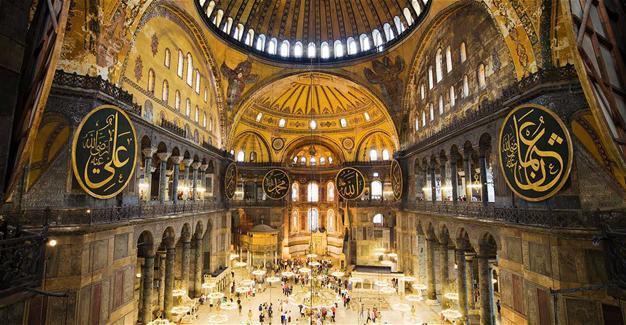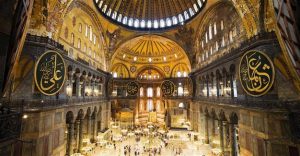The New York Times recently ran a feature on a project to map the acoustics of the Hagia Sophia in Istanbul and thereafter effectively recreate those acoustic effects in other locations via a customized set up of microphones and speakers post-production processing. Since the capture of Constantinople by Muslim forces in the 15th century singing has not been allowed in the Hagia Sophia, due to Islamic religious precepts. The Portland, OR based choir Cappella Romana recorded and released an album of mediaeval Greek Orthodox chorale pieces The Lost Voices using this technology and recreating how such a performance at the Hagia Sophia might have sounded. And it goes a little like this: https://www.youtube.com/watch?v=bHpOiX2sO-s
An excerpt from the article reads:
“In Greek Orthodox rites, Ms. Pentcheva argued, acoustics and chant interact in a way that ‘is not about sound carrying information, but sound precipitating experience. It is a fully corporeal investment.’
“The recording provides a glimpse of that experience. Phrases chanted in unison leave a ghostly imprint. Rhythmic shudders and grace notes set off blurry squiggles of overlapping echoes. Chords unfurl in reverberant bloom.
“The acoustic drama of Hagia Sophia would have unfolded alongside the changing light and curling smoke of burning incense, enveloping the senses. The effect is described in a 6th-century description of the building by Paul the Silentiary, an aristocrat and poet at the court of Justinian.
“’He speaks about a human action that brings into presence the divine reaction, the divine voice,’ Ms. Pentcheva said. ‘In a sense that is the reverberation of the space: After the human voice stops singing, the building continues.’”
Read the entire article
https://www.nytimes.com/2020/07/30/arts/music/hagia-sophia-acoustics-music.html.


